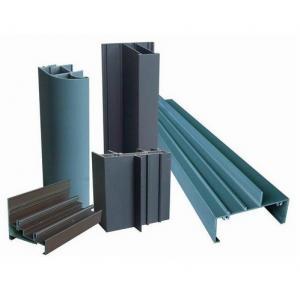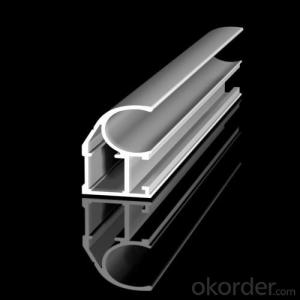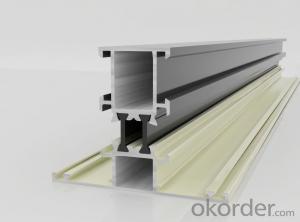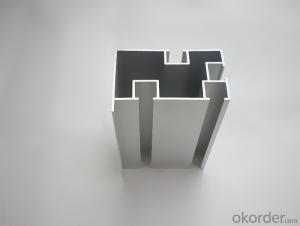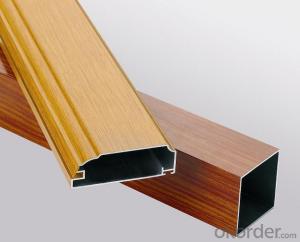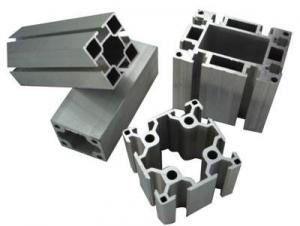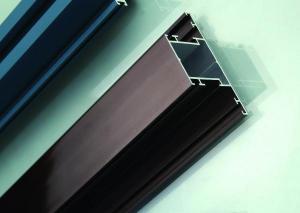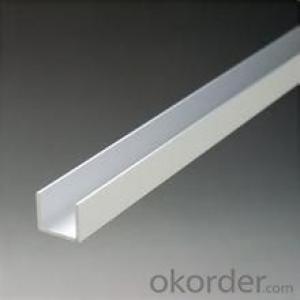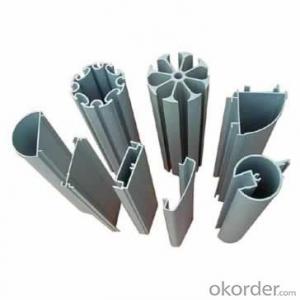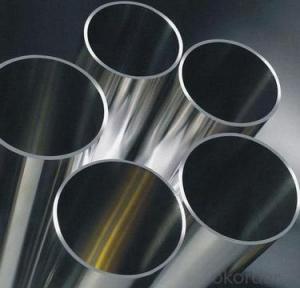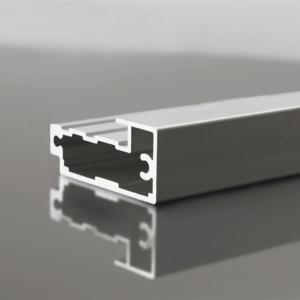Extruded Aluminum Enclosure Profiles - Curtain Wall Aluminium Profile AA6061
- Loading Port:
- China Main Port
- Payment Terms:
- TT OR LC
- Min Order Qty:
- -
- Supply Capability:
- -
OKorder Service Pledge
OKorder Financial Service
You Might Also Like
Powder Coating Aluminum door profile of - AA6060
1) Material : 6063 6061 6060 and different aluminium alloy
2) Alloy Temper: T4 T5 T6 or other special status as per customer's needing.
3) Optional Surface treatment: mill finish, anodized sliver ,anodized bronze, anodized champagne, anodized black pearl, various power coating color, electrophoretic sliver, electrophoretic champagne, electrophoretic golden,
electrophoretic titanium, machine polish sliver, machine polish bronze, wooden grain color, and Fluorocarbon spraying.
4) Annual capacity : 120000TON
5) Quality : China Nation Standard GB/T 5237 2004 (advanced class)
6) Application: can be widely used for aluminium window, door, curtain wall, hand railing ,
normal aluminium profiles, decoration and industrial aluminium profiles.
7) Advantage: Famous Brand reasonable&market price, soonest delivery and good after sale- service
- Q: This question asks for an explanation of the various types of aluminum profiles that are specifically used in the construction or design of staircases.
- <p>Aluminum profiles for staircases are diverse and serve different functions. Common types include: 1. Handrail profiles, which provide support and safety. 2. Stringer profiles, forming the backbone of the staircase. 3. Tread profiles, which are the horizontal surfaces on which one steps. 4. Riser profiles, covering the vertical space between steps. 5. Baluster profiles, used as vertical supports between handrails and treads. 6. Connector profiles, for joining different parts of the staircase. Each type is designed to withstand specific loads and is chosen based on the staircase's design, weight capacity, and aesthetic requirements.</p>
- Q: How can the aluminum profile T6 and T5 be distinguished?
- Mechanical properties are inconsistent, T5 tensile strength is 160 MPa; T6 tensile strength is 215 mpa. (normally determined by this method) do a tensile test and you'll see
- Q: Can aluminum profiles be used for curtain wall systems?
- Curtain wall systems can indeed utilize aluminum profiles. In fact, aluminum stands as one of the most prevalent materials employed in curtain wall construction due to its numerous advantages. The exceptional strength and durability of aluminum profiles allow them to bear the weight of large glass panels. Moreover, aluminum exhibits remarkable resistance to corrosion, a crucial characteristic for exterior applications where the curtain wall is exposed to various weather conditions. Additionally, aluminum profiles can be easily extruded into various shapes and sizes, offering design flexibility and customization. The lightweight nature of aluminum also facilitates easier handling and installation, resulting in reduced labor and transportation costs. Furthermore, aluminum is a sustainable material as it is recyclable, thereby contributing to the overall sustainability of the curtain wall system. In conclusion, the strength, durability, corrosion resistance, design flexibility, and sustainability of aluminum profiles make them an appropriate choice for curtain wall systems.
- Q: Are aluminum profiles suitable for use as interior finishing materials, specifically for flooring and wall panels?
- <p>Yes, aluminum profiles can be used for interior finishing materials such as flooring and wall panels. They are known for their durability, low maintenance, and resistance to corrosion. Aluminum profiles are lightweight, easy to install, and can be used in various designs and styles, making them a popular choice for modern interior design. They also offer the advantage of being recyclable and environmentally friendly.</p>
- Q: What is the maximum length of aluminum profiles available?
- The length of aluminum profiles that are available can differ based on the manufacturer and the specific product being considered. In broad terms, aluminum profiles can be made in lengths that range from a few inches to numerous feet. While certain manufacturers may provide standard lengths like 6 or 12 feet, others may possess the capacity to create custom lengths according to the customer's needs. To ascertain the maximum length possibilities for a particular aluminum profile, it is essential to consult with the manufacturer or supplier.
- Q: What are the different tolerance levels for aluminum profiles?
- The tolerance levels for aluminum profiles can vary depending on the specific application and requirements. However, some common tolerance levels for aluminum profiles include dimensional tolerances, such as length, width, and thickness variations, as well as straightness, flatness, and surface finish tolerances. These tolerances ensure the desired precision and consistency in the manufacturing and assembly of aluminum profiles.
- Q: What are the potential health hazards for individuals working with aluminum profiles in the construction industry?
- <p>Working with aluminum profiles in construction generally has low health risks compared to other materials. However, there are some considerations. Inhalation of aluminum dust can cause respiratory issues, and prolonged exposure may lead to a condition known as aluminum pneumoconiosis. Additionally, workers should be cautious of sharp edges that can cause cuts. Protective measures such as using masks and safety glasses are recommended. Aluminum itself is not magnetic and does not emit radiation, so there are no risks associated with these properties. Overall, with proper safety practices, the health risks can be minimized.</p>
- Q: What are the different types of brackets used with aluminum profiles?
- There are several types of brackets commonly used with aluminum profiles, including corner brackets, T-slot nuts, angle brackets, and joiner brackets. These brackets are designed to provide stability, connection, and support when assembling aluminum profiles in various configurations and applications.
- Q: What are the major factors determining the quality of aluminum profiles?
- Material, section size, fit tolerance, surface treatment quality, etc.
- Q: Are aluminum profiles suitable for outdoor sign applications?
- <p>Yes, aluminum profiles are commonly used for outdoor signage due to their durability, resistance to corrosion, and lightweight properties. They can withstand various weather conditions without rusting or fading, making them an ideal material for long-lasting outdoor signs. Aluminum profiles can be easily cut, shaped, and assembled, offering flexibility in design and functionality.</p>
Send your message to us
Extruded Aluminum Enclosure Profiles - Curtain Wall Aluminium Profile AA6061
- Loading Port:
- China Main Port
- Payment Terms:
- TT OR LC
- Min Order Qty:
- -
- Supply Capability:
- -
OKorder Service Pledge
OKorder Financial Service
Similar products
Hot products
Hot Searches
Related keywords

